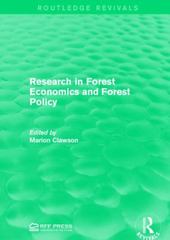Question
Proposal is for grant to study the impact of current diabetic education and treatment for newly diagnosed diabetics. Assessment of current educational tools for diabetic
Proposal is for grant to study the impact of current diabetic education and treatment for newly diagnosed diabetics. Assessment of current educational tools for diabetic education material presented to a newly diagnosed diabetic?
Prepare an Abstract
1. Develop a proposed research question.
2. Identify data you propose to use for for this educational program.
3. Time span/structure of data to be used ie. data bases EBSCO, cochrane, PubMed,
4. Hypothesize what you will find, & why results will go in a positive or negative direction.
example:
Abstract Background: Tunnel technique (TUN) has recently gained popularity among clinicians for its promising clinical and esthetic results in treating gingival recession (GR) defects. However, evidence regarding the efficacy of the TUN is not yet conclusive. Therefore, the aim of the present systematic review and meta-analysis was to investigate the predictability of TUN and its comparison to the coronally advanced flap (CAF) procedure.
Methods: A literature search on PubMed, Cochrane libraries, EMBASE, and hand-searched journals through November 2017 was conducted to identify clinical studies investigating TUN for root coverage procedures. Only randomized controlled trials (RCTs) were considered for the meta-analysis comparing TUN to CAF. Results: A total of 20 articles were included in the systematic review and six in the meta-analysis. The overall calculated mean root coverage (mRC) of TUN for localized and multiple GR defects was 82.75 19.7% and 87.87 16.45%, respectively. Superior results were found in maxillary and in Miller Class I and II GR defects. TUN outcomes may have been enhanced by split-thickness flap preparation and microsurgical approach. TUN and CAF had comparable mRC, complete root coverage (CRC), keratinized tissue gain, and root coverage esthetic score when varying combinations of graft material were evaluated. However, CAF demonstrated superior outcomes to TUN when the same graft (connective tissue or acellular dermal matrix) was used in both techniques.
Conclusions: TUN is an effective procedure in treating localized and multiple GR defects. Limited evidence is available comparing TUN to CAF; however, CAF seemed to be associated with higher percentage of CRC than was TUN when the same grafts (connective tissue or acellular dermal matrix) were used in both techniques
Step by Step Solution
There are 3 Steps involved in it
Step: 1

Get Instant Access to Expert-Tailored Solutions
See step-by-step solutions with expert insights and AI powered tools for academic success
Step: 2

Step: 3

Ace Your Homework with AI
Get the answers you need in no time with our AI-driven, step-by-step assistance
Get Started


